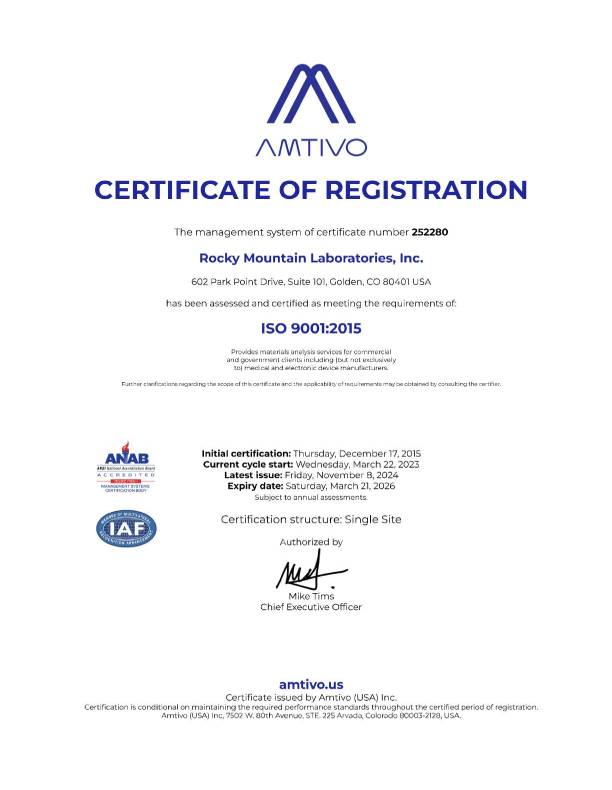X-ray Photoelectron Spectroscopy (XPS), also known as Electron Spectroscopy for Chemical Analysis (ESCA), is a powerful technique for characterizing catalysts at the molecular level. Catalysts play a pivotal role in various industrial processes, and understanding their surface composition, chemical states, and interactions is crucial for optimizing performance. XPS provides valuable insights into the electronic and chemical properties of catalysts, aiding researchers and engineers in catalyst design, development, and optimization.
Continue reading “XPS Analysis for Catalysts”Blog
XPS Analysis for Catalysts
Difference between Spectrum One and Spectrum 100 FTIR
“Spectrum One” and “Spectrum 100” refer to two models of FTIR (Fourier Transform Infrared) spectrometers manufactured by PerkinElmer, a company that produces analytical instruments. The names “Spectrum One” and “Spectrum 100” are specific to the product line, and different models may exist within each category. The primary differences between them may lie in their specifications, features, and performance characteristics. As of my last knowledge update in January 2022, I don’t have detailed specifications for individual models released after that date.
Continue reading “Difference between Spectrum One and Spectrum 100 FTIR”Difference between Primary Secondary and Tertiary Amines Via FTIR
In FTIR (Fourier Transform Infrared) spectroscopy, primary, secondary, and tertiary amines can be distinguished based on the characteristic infrared absorption bands associated with their functional groups. Here’s a brief overview of the differences in the FTIR spectra of primary, secondary, and tertiary amines:
Continue reading “Difference between Primary Secondary and Tertiary Amines Via FTIR”Difference between Optical Absorption And FTIR
Optical absorption and FTIR (Fourier Transform Infrared) spectroscopy are two distinct techniques that provide information about the interaction of electromagnetic radiation with matter, but they operate in different regions of the electromagnetic spectrum and reveal different types of molecular information.
Continue reading “Difference between Optical Absorption And FTIR”SEM Analysis for Semiconductor Applications
Scanning Electron Microscopy (SEM) is a pivotal tool in the semiconductor industry, offering a detailed and high-resolution approach for the characterization and analysis of semiconductor materials and devices. SEM is employed in various stages of semiconductor manufacturing, from research and development to quality control, failure analysis, and process optimization.
Continue reading “SEM Analysis for Semiconductor Applications”Difference between Number of Scans and Resolution In FTIR
In FTIR (Fourier Transform Infrared) spectroscopy, the number of scans and resolution are two key parameters that influence the quality and characteristics of the obtained infrared spectra. Here’s a brief explanation of each and the differences between them:
Continue reading “Difference between Number of Scans and Resolution In FTIR”Difference between Normal KBR and FTIR Grade KBR
KBr (potassium bromide) is commonly used in infrared spectroscopy as a sample preparation material for preparing pellets or discs. There is a difference between “Normal KBr” and “FTIR Grade KBr” based on their purity and suitability for use in FTIR (Fourier Transform Infrared) spectroscopy:
Continue reading “Difference between Normal KBR and FTIR Grade KBR”Difference between FTIR And XPS
FTIR (Fourier Transform Infrared) spectroscopy and XPS (X-ray Photoelectron Spectroscopy) are both analytical techniques used to study the composition and chemical state of materials, but they operate on different principles and probe different aspects of a sample. Here are the key differences between FTIR and XPS:
Continue reading “Difference between FTIR And XPS”Difference between FTIR And UV-Vis
FTIR (Fourier Transform Infrared) spectroscopy and UV-Vis (Ultraviolet-Visible) spectroscopy are two analytical techniques that use different regions of the electromagnetic spectrum to provide information about the composition of materials. Here are the key differences between FTIR and UV-Vis spectroscopy:
Continue reading “Difference between FTIR And UV-Vis”AES Analysis for Polymer Materials
Auger Electron Spectroscopy (AES) is a powerful surface analysis technique widely used in the characterization of polymer materials. Polymers, with their diverse applications in various industries, often require detailed examination of their surface composition and chemical states. AES provides valuable insights into the elemental composition and surface characteristics of polymers, aiding researchers and engineers in optimizing material performance and ensuring product quality.
Continue reading “AES Analysis for Polymer Materials”


